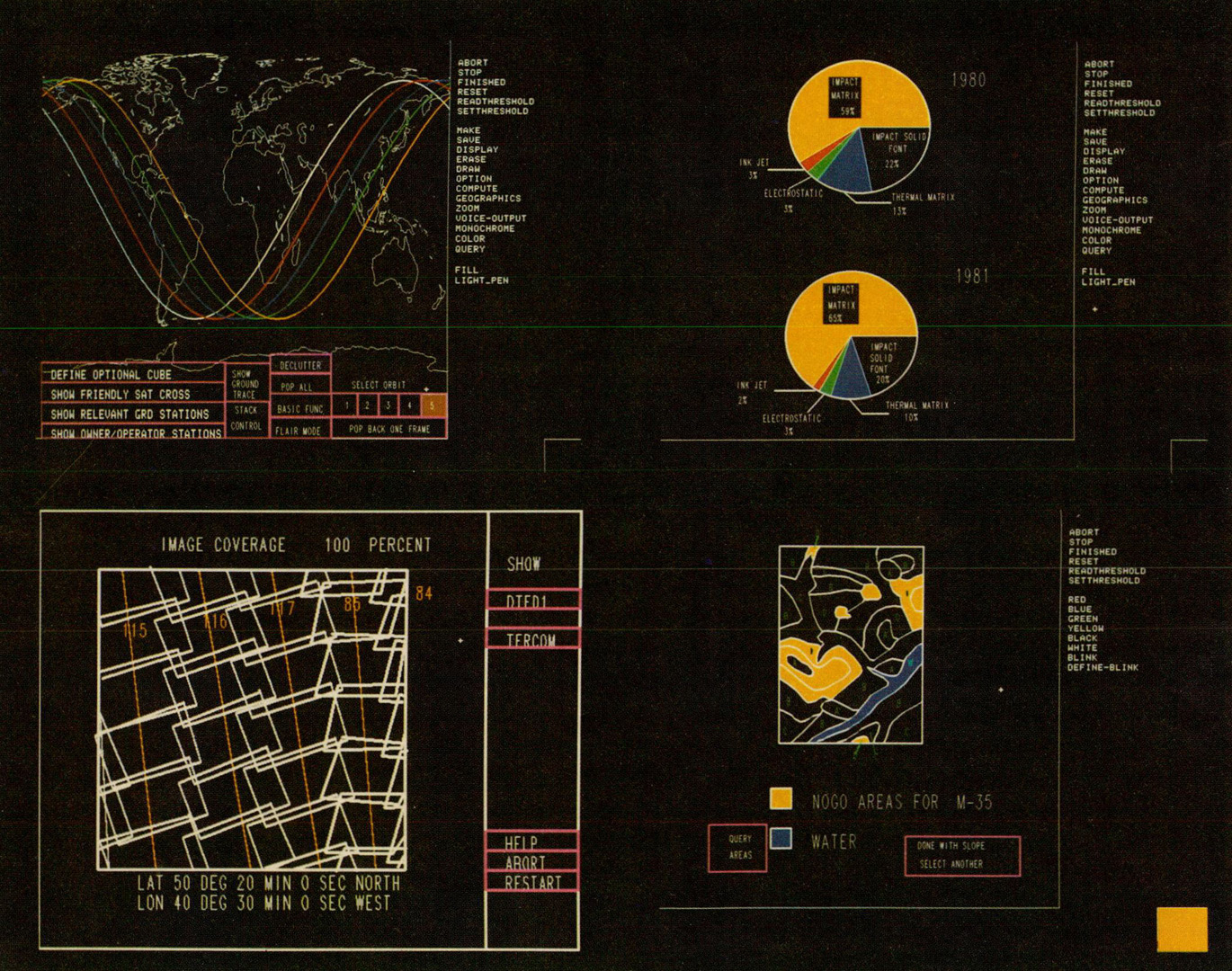“FLAIR – user interface dialog design tool” by Wong and Reid
Conference:
Type(s):
Title:
- FLAIR - user interface dialog design tool
Presenter(s)/Author(s):
Abstract:
To aid the system designers in achieving early involvement of the users, FLAIR (a user interface dialog design tool) was conceptualized and developed. FLAIR allows the designer to rapidly prototype a system’s Man-Machine Interface. A system designer can select a desired mix of input/output devices ranging from voice to high resolution graphics equipment. FLAIR prompts its users with a dynamic menu according to a pre-defined English-like syntax. Commands are entered by the designer’s own voice. Entered commands are validated by voice pattern recognition and command language-gating. Pointing devices are used to locate, place, and/or pick objects from the RAMTEK 9400 25” high-resolution color monitor. The graphics display portion of FLAIR is handled by a Core Standard graphics package. This particular package also fits the specific needs of FLAIR in that it makes available most of the RAMTEK 9400’s hardware features. A relational DBMS has been integrated into FLAIR in order to manage system and user-defined data relationships. The user-defined data can be associated with a particular on-screen graphics symbol, and can then be queried at a later time. In addition to single graphics snapshots (or “static frames”), FLAIR allows the system designer to create command menu hierarchies for “dynamic scenarios.” This allows the designer to simulate, through client menu item selection, the system control flow. He can, in effect, create a tree of menus, traverse the tree at will, and select more menus or system actions as desired. All menus appear as sensitized areas on the graphics screen, and can be selected via any of the available input devices. It is estimated that a system designer can greatly improve his dialog design productivity by using FLAIR. The designers need not code any formal programs. The designer need not master the usage of the host computer, the graphic input/output systems, the menu controls, or the database programming before his designs are realized. FLAIR is there to assimilate, assemble, save and exercise his instructed operator dialog.
References:
1. Bergeron, R. D., Bono, Peter, Foley, James, “Graphics Programming Using the Core System.” Computing Surveys Dec. 1978
2. Newman, W., Sproull, R., “Principles of Interactive Computer Graphics,” McGraw-Hill, 2nd Edition 1979
3. Stonebraker, M., Held, G., Wong, E., “INGRES-A Relational Data Base System,” Proc. AFIPS, Volume 44
4. ACM-SIGGRAPH, “Status Report of the Graphics Standards Planning Committee,” Computer Graphics, Vol. 13, No. 3, August 1979
5. Treu, Siegfried, “A Framework of Characteristics Applicable to Graphical User-Computer Interaction,” P61-71, User-Oriented Design of Interactive Graphics Systems. Based on ACM/SIGGRAPH Workshop Oct 14-15, 1976, 1977
6. Smith, Sidney, “Man-Machine Interface (MMI) Requirements Definition and Design Guidelines – A Progress Report,” P39-81, ESD-TR-81-113 Feb.1981
7. Foley, J. D., Chan, P., Wallace, V. L., “The Human Factors of Graphic Interaction: Tasks and Techniques,” Tech. Rep. 508, US Army Research Institute for the Behavioral and Social Science, Sept. 1981
8. Bolt, T., “Put-That-There Voice Gesture at the Graphics Interface;” ACM/SIGGRAPH ’80 Conference Proceedings, July 1980
9. Parson, H., “Man-Machine System Experiments,” The Johns Hopkins Press, 1972
10. Deaton, B., “Dialog Design Language Functional Requirements Specification,” TRW 1980 Man-Machine Interface IR&D Final Report, Dec. 1980
11. Kloster, G. V., “Draft and Guidelines for the Development of the MMI Design Guidebook”: TRW 1980 Man-Machine Interface IR&D Final Report, Nov. 1980
12. Hanau, P., Lenorovitz, D., “Prototyping and Simulation Tools for User Computer Dialogue Design”; ACM/SIGGRAPH ’80 Conference Proceedings, July 1980





